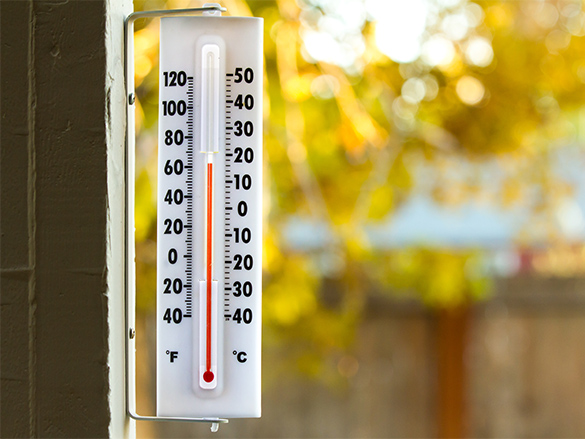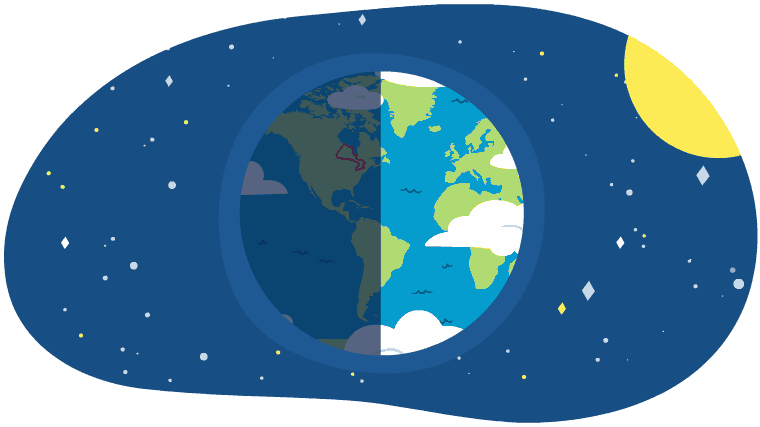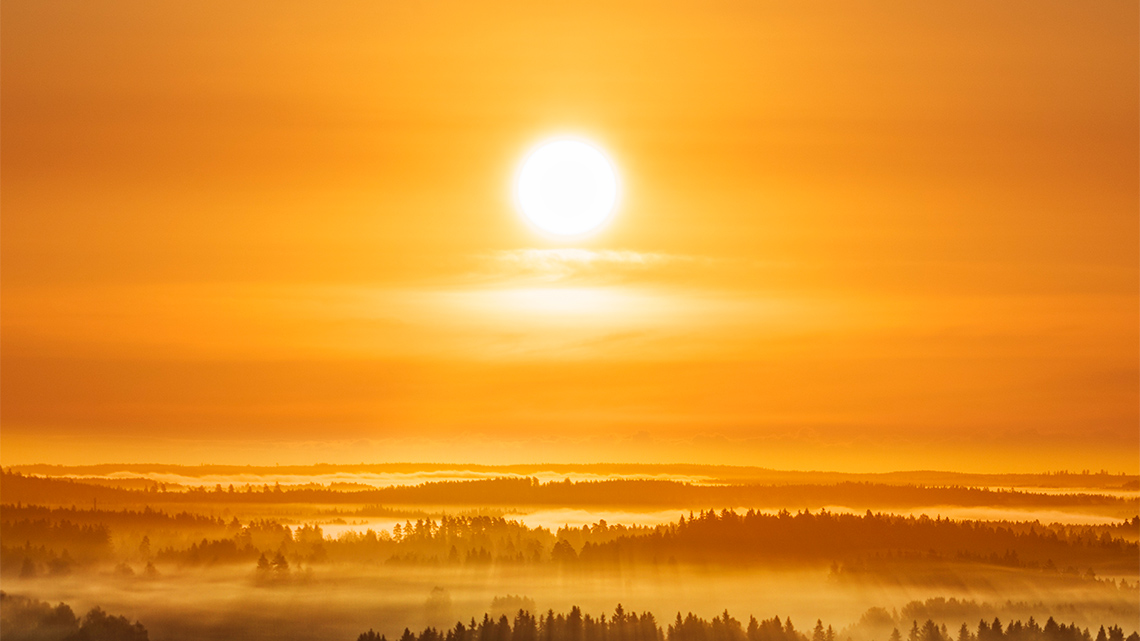Minds On
The Sun
Explore this short clip of the Sun rising and setting in one day. As you explore the clip, what do you notice? What do you wonder?
Record your ideas on paper, on the computer, or in a recording.

What activities do we do during the day when the Sun is up?
What activities do we do at night when the Sun is down?
Why do you think the temperature changes throughout the day?

Remember, temperature is a measure of how hot or cold something is. It can be measured using a thermometer.
Action
What happens to the Sun?
When the Sun rises, the rays from the Sun shine onto objects on earth. During the day, the rays from the Sun move and shine on objects differently.
As you explore this learning activity today, think about the information you are learning and how you record that information.

It’s time to record what you have learned. You could write it down or make an audio or video recording.

You should think about what you have learned. Did you learn anything new?
Explore these pictures and descriptions of the Sun’s rays shining on a home.
Pause and Reflect
Pause and reflect
What is different in each picture? Is anything the same?
Record your answers on paper, on the computer or in a recording.
Why do the Sun’s rays do that?

In each picture, you noticed that the rays of the Sun were shining differently. Why does this happen?
The earth is slowly spinning around in a full turn every day. It takes a total of 24 hours for the spin to be complete. For half of this spin, where you live on the earth is facing the Sun. That is day! For the other half of this spin, where you live is facing away from the Sun. That is night!
Explore this clip of the earth spinning one full turn.

Did you know?
Did you know?
Did you know that when it is daytime in Ontario, it is nighttime for communities on the other side of the earth. When it is nighttime in Ontario, it is daytime for communities on the other side of the earth.
Think about it!
Use this learning to think about these questions and record your answer on paper, on the computer, or in a recording.
- If the earth spins in full circle in one day, what part of the earth is facing the Sun when the “Sun comes up” and when the “Sun goes down”?
- Does this happen every day?
Because the earth takes the same amount of time to spin around once every day, the Sun will rise in the morning and set at night every day. This means that the Sun rising, and Sun setting happens in a daily cycle. A cycle is something that happens in the same way over and over again.
Sun and temperature
When the Sun is facing Ontario and other areas of the earth, it warms the air. The more we are facing the sun, the higher the sun is in the sky. When it is high in the sky, the rays of the sun shine bright and the temperature is warmer.
Explore this graph. It shows how warm the air is at different times of the day. The suns show how warm the air is. If there is more than one sun it means the air is warmer.

A graph showing how warm the air is at different times of the day by using images of suns. Sunrise (morning) has 1 sun, Daytime (mid-day) has 3 suns, sunset (evening) has 1 sun, night has zero suns.
What parts of the day have a sun?
Press ‘Answer’ to learn what parts of the day have a sun.
Sunrise, daytime, and sunset all have suns. Nightime does not have a sun.
When is the temperature the warmest? How do you know? Record your answers in a method of your choice.
Press ‘Answer’ to learn when the temperature is the warmest.
The temperature is the warmest during the daytime. The graph shows the most suns at that time.
Making connections
Let’s return to the animation from the Minds On that shows the sun rising and setting.

Can you make any connections between the graph and the animation?
How does this animation and the graph share information about how temperatures in the day are related to the sun’s rays?
Record your ideas on paper, on the computer, or in a recording.
Press ‘Possible Answer’ to access connections between the graph and animation.
The Sun is highest at midday and there are the most suns on the graph. The animation shows where the Sun is and the graph shows how warm it is at those times of day.
Consolidation
The Sun and the day

Can you use your learning to put these times of day in the order from beginning to end?
What makes a day a cycle?
If you were going to add temperature of each part of the cycle using a picture of a sun, how would you add the suns? Why?
Record your answers on paper, on the computer, or in a recording.
Share your learning

How could you share what you learned about the Sun’s rays from this lesson to someone who is new to this topic?
What information would you like to include? Why?
How would you like to share? In a picture? In writing? In a recording?
Record your answers in this method to share your learning.
Reflection
How do you feel about what you have learned in this activity? Which of the next four sentences best matches how you are feeling about your learning? Press the button that is beside this sentence.
I feel…
Now, record your ideas about your feelings using a voice recorder, speech-to-text, or writing tool.


